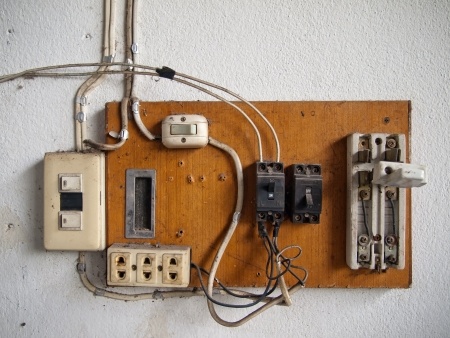 Electricity has existed in New Zealand since the 1910s, with the majority of houses using it from the 1930s to 1940s. Around the time of electrical expansion came ambitious building projects across the country, using old techniques to wire properties. Although many properties will have since had new wiring installed, there is a chance that yours is home to old wiring if it was built before a certain period. Fortunately, there are certain ways to determine whether this is the case. If you are not sure, rewiring your house can improve its safety and save you money.
Electricity has existed in New Zealand since the 1910s, with the majority of houses using it from the 1930s to 1940s. Around the time of electrical expansion came ambitious building projects across the country, using old techniques to wire properties. Although many properties will have since had new wiring installed, there is a chance that yours is home to old wiring if it was built before a certain period. Fortunately, there are certain ways to determine whether this is the case. If you are not sure, rewiring your house can improve its safety and save you money.
Which Homes Are Most Likely to Require Rewiring?
If your property was built before 1970, there is a chance it needs rewiring. From the 1940s to the 1970s, Tough Rubber Sheathed (TRS) and Vulcanised India Rubber insulated (VIRi) were used to insulate wires. Wire insulation exists to ensure electricity does not have the potential to cause fires, and it aids with smooth conductance. Unfortunately, both TRS and VIRihave been found to deteriorate over a period of decades. As a result, bare copper wires are exposed.
In most cases, exposed wires will have caused enough signs for your home’s previous owners to seek the assistance of an electrician, who will have then installed new ones. However, there is a chance that this not has happened, particularly if your home was built around the 1970s. It is better to err on the side of caution in such situations and seek the advice of a professional.
There are some warning signs that could indicate that your home requires rewiring:
- The plugs and sockets around your home become hot to touch after or while you are using them
- There are brown scorch marks around your plugs and sockets
- Fuses blow and circuit breakers trip regularly for no apparent reason
- Lights flickers frequently and bulbs blow
How Does Rewiring Improve Safety?
The wiring used in years gone by was not designed to carry the load of electricity an average household uses today. While those who lived in properties across Whangarei and Northland may have run a fridge, possibly a television, and potentially electric heating, they did not use the volume of appliances used in a modern age. Today, most households use freezers, multiple televisions, cable boxes, games consoles, hair dryers, kettles, and many other appliances. With multiple connections in use, electric overload can cause fuses to blow. In a worst case scenario, a wire that is exposed and handling more than its usual capacitance could lead to a house fire.
Having old wiring in your home can become a bit of a nuisance too. Without smooth conduction systems, there is a chance that an overbearing load of electricity will be delivered to your new appliances. This could potentially lead to breakages, and in some cases can cause fires.
One of the more worrying risks associated with old wiring is electrocution. Depending on the state of your wiring, the risk of electrocution may be higher than the risk of a fire. This is particularly worrying if you have a family, as children are less likely to exercise caution around sockets than adults.
Fortunately, having your home rewired takes around three days, with minimum interruption to your day-to-day life. Not only will you make your home safer, you won’t have to worry about being disturbed while the work goes on.